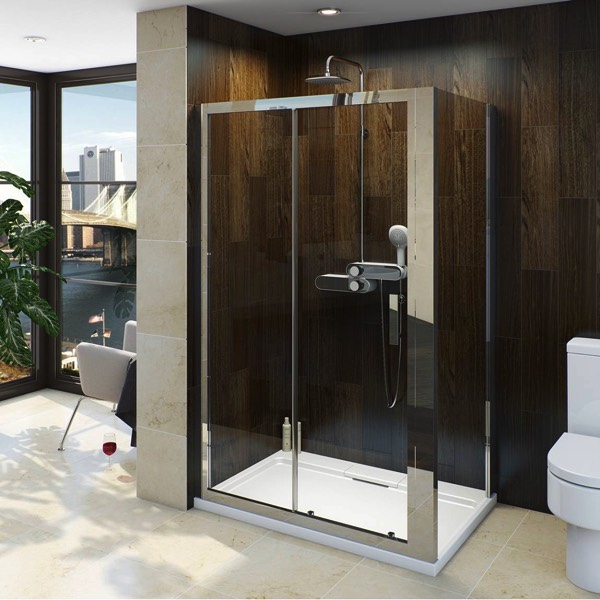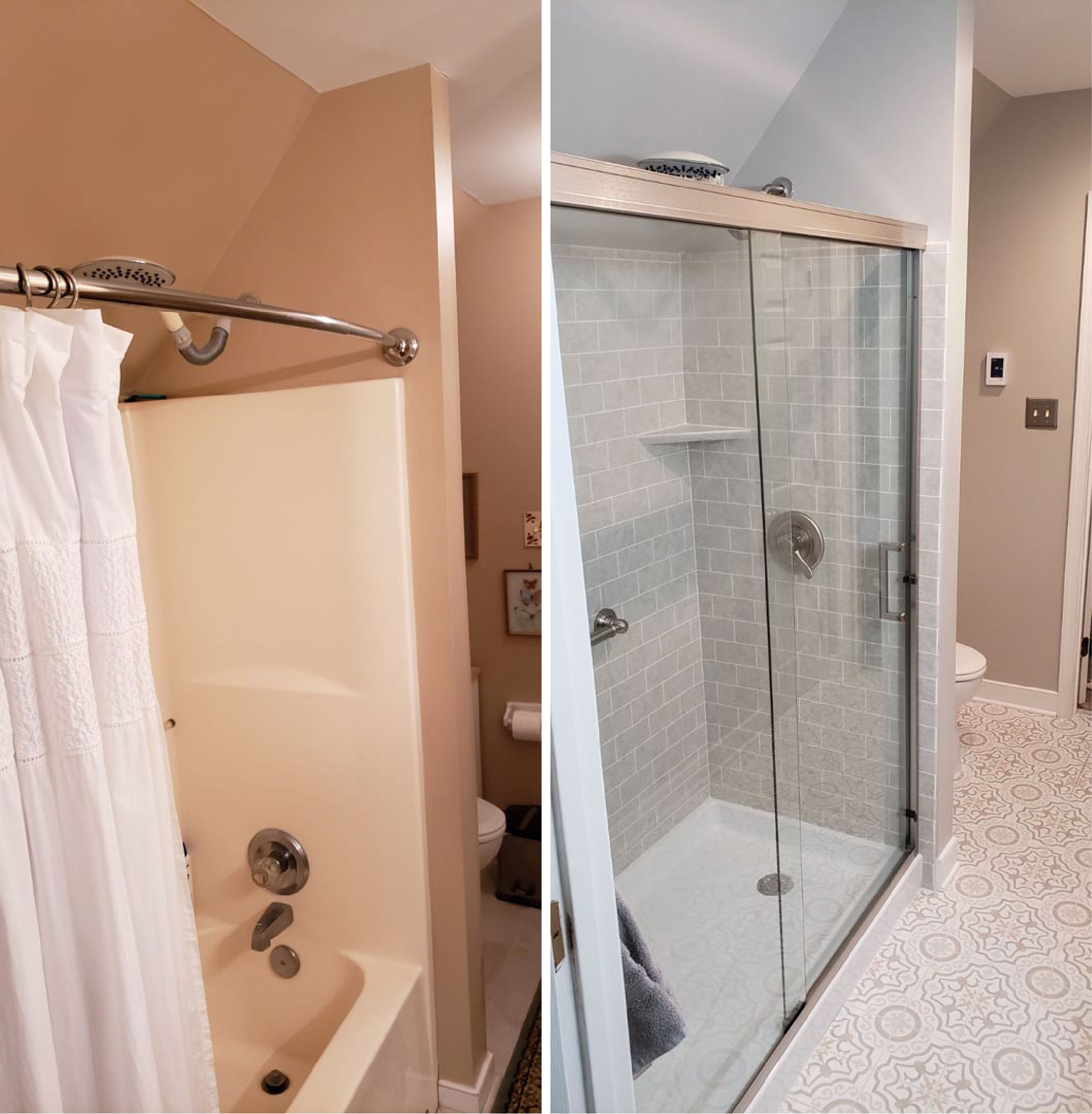Effortless Installation Methods for a New Shower Unit
Effortless Installation Methods for a New Shower Unit
Blog Article
This article listed below in relation to How to Build a Shower Enclosure for Your DIY Bathroom is totally remarkable. Give it a try and draw your own assumptions.

A successful shower setup needs careful preparation and also a lot of job. In most cases, you will need to do 3 kinds of jobs: framing walls, installing the plumbing, as well as ending up wall surfaces.
Different Kinds Of Shower Units
A Lot Of Usual Mistakes
Preparation.
Firstly, you need to decide on the kind of shower that you desire to mount. It is very important to determine whether the selected shower can dealing with certain systems and also can manage a safe level of water with the central heating boiler. The majority of shower units nowadays are developed to be versatile to various water stress (such as kept hot water as well as chilly mains).
It is likewise essential to think about the water stress as well as the preparation of the piping as well as water drainage for the shower.
Approach.
Depending upon the kind of shower you wish to install, the shower head should either be suited order to avoid its contact with the water in the bath listed below or the base tray, or it needs to have a check valve.
Prior to beginning, it is recommended to mark the placements of the shower head as well as control, and also to prepare the pipe-work involved. In addition, the drain system to get rid of the waste water will certainly need to be prepared. Both positions of the cord route as well as the shower button will additionally need to be taken into consideration if a rapid or electric shower system is being mounted.
Use the direction overview provided with the shower unit to fit the shower control.Before fitting the pipelines that will supply the water to the shower system, it is necessary to cut off the water system. In order to secure the pipes, they need to be given a waterproof covering as well as additionally fitted with isolating valves. The pipes can then be buried into the wall as well as plastered over to neaten the overall look.
Fit the base tray, shower head, and also installations.
Attach the major shower control to the pipelines that will be supplying the water (This might need a female screw thread adapter).
Reconnect the water system and test the pipelines for any type of leaks, as some might need tightening.
If you are mounting an electric shower, remember to switch off the electricity supply prior to making any electric connections. As soon as these connections have actually been made (there must be guidance within the user's manual), the power supply can be switched back on.
Readjusting Water Pressure to Match Your Shower.
The cold water reservoir can be lifted to a better elevation (in some cases just 150mm (6inches)) by installation a strong wood support beneath it - potentially made up of struts and also blockboards. If you choose this choice, the major and also distribution pipes will certainly additionally need to be increased to satisfy the brand-new elevation of the reservoir.
Conversely, a booster pump (a single pump or a dual/twin pump) can be fitted. Whichever type is picked, it needs to be attached right into the power supply in order to run.
Piping as well as Drain.
It is best to utilize 15mm diameter supply pipes, and make the go to the shower as brief as well as straight as possible so regarding keep maximum pressure and also minimise heat loss. In addition, by minimising the use of elbows for pipe edges, you can reduce the resistance in the circulation of the water system. You can accomplish this by flexing the pipes instead.
How Do You Install a Shower? Follow This Guide
Installing a Shower at a Glance
Tools & Materials: Level, electric drill, caulk, hole saw, cedar shims, shower unit Step 1: Drill pilot holes Step 2: Prep fixture holes Step 3: Move unit into place Step 4: Caulk corners and base Step 5: Attach door Step 6: Install shower pan Whenever plumbing is involved in a DIY project, people worry about what might go wrong. The truth is that installing a shower isn’t that complicated, and you can save a lot of money by doing it yourself. You shouldn’t need to make any alterations to your plumbing to complete the job, and most of the tools you need will be provided in your new shower kit.
Can I Install a Shower Myself?
Even if you’ve never installed a shower before, you’ll find this to be a project that is perfectly suited for DIYers with a moderate level of experience. Whether you're doing a bathtub conversion or installing a new stall, most of what you need comes in shower kits that you can purchase from a hardware store. The first thing you need to do is determine what type of shower stall you want.
Single-panel stalls are the easiest to install because they come preassembled. All you need to do is put them in place. Multi-panel showers require a few additional steps, but you’ve got more control over the appearance of your unit. Multi-panel units are also much easier to handle if you’re going to do the installation without any help.
Be sure to take all appropriate safety precautions, such as wearing eye protection and gloves. When you’re removing or installing a shower unit, you might kick up debris that could hurt your eyes. You’ll also need to work with equipment that will get extremely hot, so be sure to have safety gloves handy.
Tools and Materials
2- to 4-foot level Electric drill with a 1/8-inch drill bit Caulk 2-inch hole saw Cedar shims The unit itself Before You Begin: Prep the Space
It’s highly important to measure your space accurately before putting the stall in. Measuring from the floor upward and from each corner outward will ensure you’ve got the right measurements. What you’re looking for is where the plumbing apparatuses are going to come through the stall. Transfer these measurements over to the back of your unit by drawing the locations of these holes using a pencil or marker.
Pull out your old shower and make sure to scrape off all the old caulking. Be thorough because you want to work with smooth surfaces for the best installation. Once you’ve pulled out your existing shower, you need to make sure that the floor is clean and dry. The best way to clean debris is with a shop vacuum, as it’ll soak up water and dirt together.
If you’re experiencing any plumbing issues, such as low water pressure, this is a perfect opportunity to solve them. Make sure that the pipes themselves are not in need of patching and clean your showerhead. When you turn the water back on after your project, check the pipes for signs of wear or disrepair. Anything beyond minor repairs should be handled by a plumber, and this is the best time to bring in a professional.
If the floor has any moisture at all, don’t proceed until it’s completely dry. The last thing you need is for the floor to rot or invite mold and mildew into your base. Once everything is dry, apply waterproof wallboard to the walls. This can be attached with screws or nails, then sealed with caulk so that water doesn’t seep into any crevices.

Do you appreciate more info about How to Build a Shower Enclosure for Your DIY Bathroom? Try leaving feedback below. We'd be glad to find out your thinking about this content. Hoping that you visit us again soon. Loved our blog entry? Please share it. Help others locate it. I love reading our article about How to Install a One-Piece Shower Unit.
Click Here Report this page